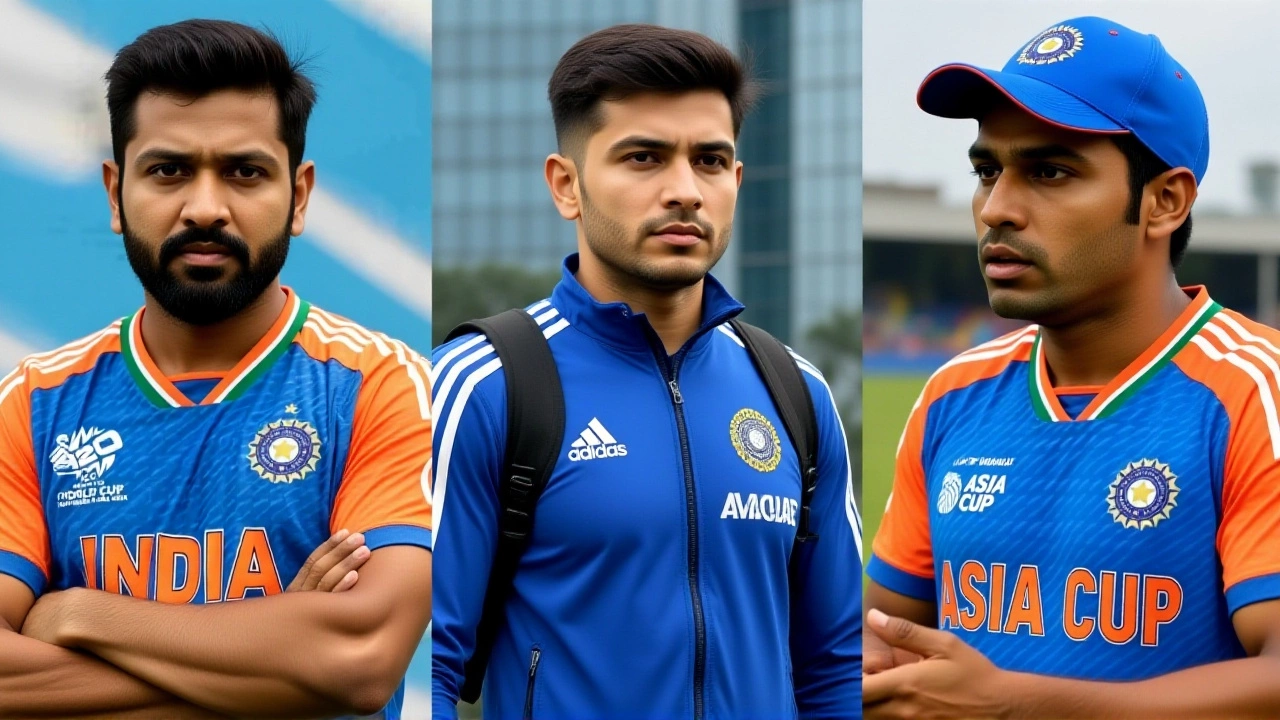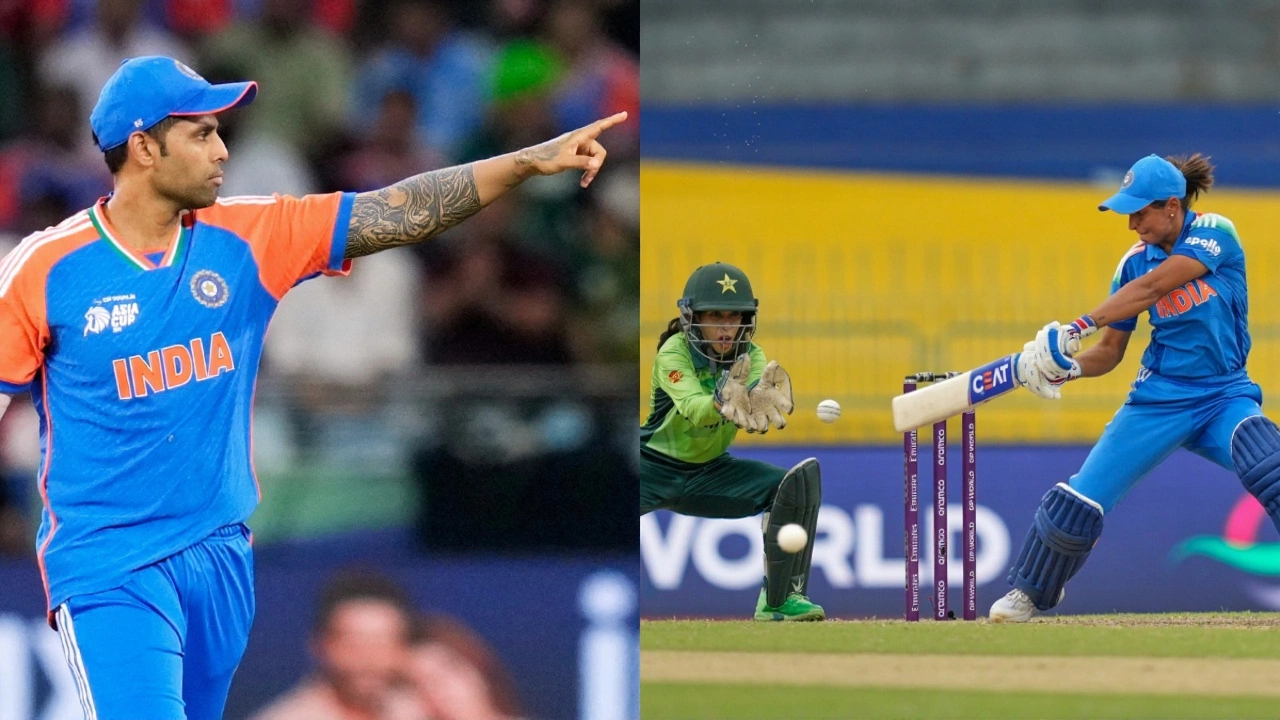When Suryakumar Yadav, India's T20I captain walked into the press room after a six‑wicket win over Pakistan, he didn't waste any time with the usual post‑match gratitude. Instead, he dropped a line that set the cricket world buzzing: the India‑Pakistan contest is "not a rivalry anymore." The remark came on September 21, 2025, following the Asia Cup 2025Dubai International Cricket Stadium Super Four clash in Dubai, United Arab Emirates.
Why the comment matters
The India‑Pakistan rivalry has long been more than just sport; it’s a cultural flashpoint that sparks feverish debate wherever the two sides meet. But Yadav’s claim rests on hard numbers. He pointed out that a true rivalry, in his view, would look like a 15‑match series dead‑locked at 8‑7. In reality, the tally sits somewhere between 11‑3 and 13‑0 in India’s favour across T20 Internationals, depending on which source you trust. "When the record is that lopsided, it stops feeling like a rivalry," he said, his tone mixing confidence with a hint of provocation.
Match recap and the spark
The Super Four encounter itself was a showcase of India’s depth. Opener Abhishek Sharma lit the fire, contributing a quickfire 45 off 28 balls that set the tone. Pakistan’s chase crumbled at 150‑5, and India sealed the win by six wickets with seven overs to spare. In the post‑match conference, a senior Pakistani journalist asked whether Pakistan had "competed in a better way today," a question that didn’t even mention the word rivalry. Yadav seized the moment, launching into his prepared statement about the futility of the rivalry narrative.
Pakistan’s response
Two days later, the Pakistani camp fired back. Shaheen Shah Afridi, the 24‑year‑old pace spearhead, said, "Let him say what he wants. Neither has he reached the final yet, nor have we. We will see when the moment comes. It is our job to win." His measured reply underscored that the tournament was far from over – the final was still slated for September 28 at the same Dubai venue.
Former wicket‑keeper‑batsman Rashid Latif took a more political tone, reminding anyone listening that as long as there is "jungal" (war), the cricket rivalry will endure. "It will not end," he said, linking the sporting contest to the lingering tensions after India’s Operation Sindoor in August 2025, a response to the July 14 Pahalgam terrorist attack.
What the stats really say
- Overall T20I head‑to‑head: India leads 11‑3 (Indian Express) or 12‑3 (Times of India).
- ICC event meetings: India ahead 7‑1 (Indian Express, Oct 5 2025).
- Super Four clash on Sep 21: India 150/4, Pakistan 144/9.
- Potential third meeting: Final on Sep 28 at Dubai International Cricket Stadium.
These numbers paint a picture of dominance, but they don’t capture the emotional charge that still surrounds every Indo‑Pak encounter. Fans on both sides treat each match as a national statement, regardless of the ledger.

Implications for the Asia Cup final
If both teams win their remaining Super Four fixtures, the final could turn the tables. A win for Pakistan would narrow the gap in the rivalry narrative, while another Indian triumph would deepen Yadav’s point. Cricket analysts on XtraTime and Sports Today have already speculated that a high‑stakes final could revive interest, even if the statistical odds favour India.
Beyond the tournament, Yadav’s comment may influence how broadcasters market future clashes. The "rivalry" tag often drives viewership and advertising revenue; downplaying it could affect sponsorship deals for both boards.
Historical backdrop
The India‑Pakistan cricket rivalry dates back to their first Test in 1952. Over the decades, the two nations have produced nail‑biting finishes – the 1999 World Cup semifinal, the 2007 T20 World Cup final, and numerous close ODI chases. Yet, the balance has shifted heavily toward India in the shortest format since 2016, especially after a series of clean sweeps in 2018‑2021.
Political events have often spilled onto the field. The 2001 series was postponed after the Parliament attacks; the 2019 World Cup group match was played under heightened security after the Pulwama incident. Yadav’s remarks echo a broader trend where sport becomes a surrogate battleground, even when on‑field results suggest one side’s superiority.
Where the story goes from here
The immediate future hinges on the Asia Cup final. If Pakistan pulls off an upset, Yadav’s statement might be re‑examined as premature bravado. If India clinches another win, the narrative could shift toward a redefinition of what a rivalry means in modern cricket – perhaps less about parity and more about symbolism.
Meanwhile, commentators expect the Board of Control for Cricket in India (Team India) to keep leveraging the "rivalry" label for marketing, even as players like Yadav push back on its relevance. The coming weeks will reveal whether the cricketing world embraces a new, less‑charged terminology or doubles down on the historic feud.
Frequently Asked Questions
How might Yadav’s “no rivalry” comment affect future India‑Pakistan matches?
Broadcasters may tone down the rivalry hype, potentially lowering viewership premiums. However, the public’s emotional investment is likely to keep the matches highly watched, especially if the final pits the two teams again.
What is the current statistical gap between India and Pakistan in T20 Internationals?
India leads between 11‑3 and 13‑0, depending on the source. In ICC‑sanctioned events, the record stands at 7‑1 in favour of India.
Could political tensions revive the rivalry sentiment?
Former players like Rashid Latif argue that as long as geopolitical friction persists, the cricket rivalry will remain a symbolic extension of that conflict, regardless of on‑field results.
What are the odds of a Pakistan win in the upcoming final?
Analysts rate Pakistan’s chances at roughly 30 % based on recent form and the statistical mismatch, but cricket’s unpredictability keeps fans hopeful.
How have past Asia Cup meetings shaped the rivalry?
Previous Asia Cup clashes have produced memorable moments, such as India’s dramatic chase in 2014. Those games are often cited as the emotional core of the rivalry, even when one side dominates statistically.
